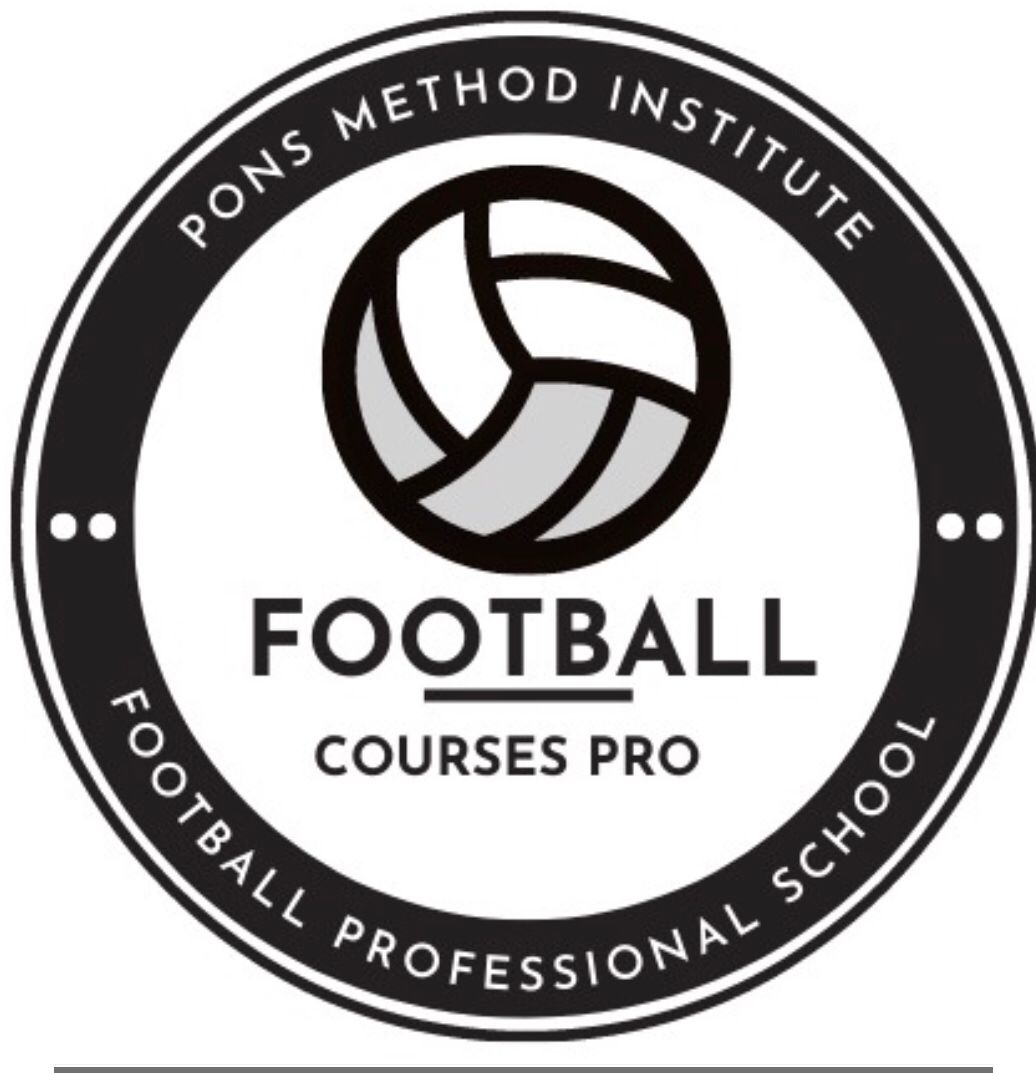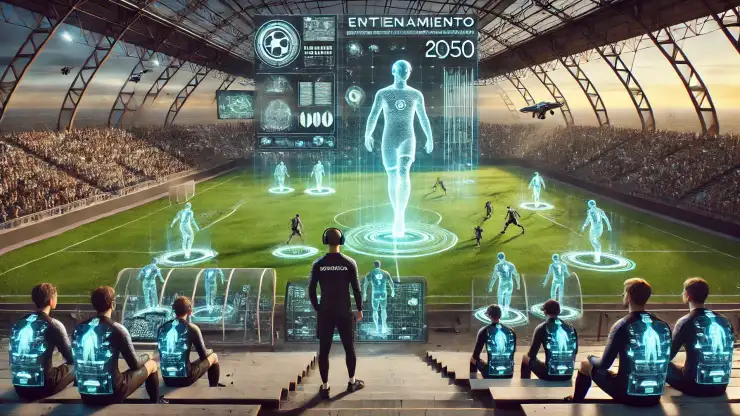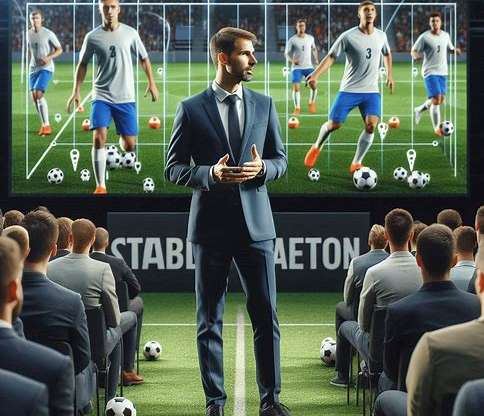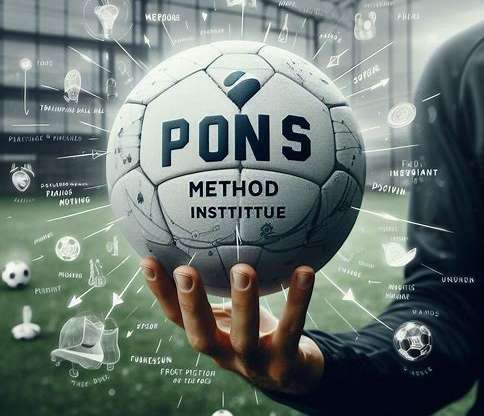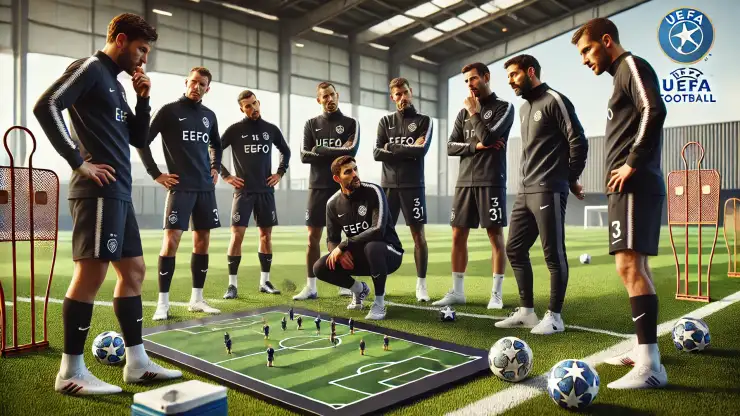Smart Counter Pressure: The Key to Tactical Mastery with the Pons Method
Counterpressing, or Gegenpressing, has been one of the mainstays of modern football, but what happens when it is combined with a scientific and methodological approach? The Pons Method takes this tactic beyond simple intensity, structuring the chaos and turning every ball loss into a controlled opportunity to dominate the game.
Unlike traditional Gegenpressing, based on physical exertion and wear and tear, the Pons Method introduces tactical automation, applied neuroscience and synchronized patterns that maximize the efficiency of pressing. It’s not just about running after the ball; it is about knowing where and when to press with surgical precision.
This article explores how the Pons Method transforms back pressure into a predictive tool, leveraging transitions to generate competitive advantages. From automatic player relocation to positional synchronization, the Pons Method not only recovers the ball, but turns every second after the loss into a planned attacking play.
“We’re not just looking to regain the ball, we’re looking to regain control of the game” – David Pons
This innovative approach promises to redefine the future of high pressing and set new standards of excellence in elite football.
Key Principles of Backpressure Under the Pons Method
Adaptive Defensive Automation
The Pons Method promotes the creation of automated defensive patterns that are activated immediately after the loss of the ball. These patterns are designed for:
React in less than 3 seconds after the loss.
Automatically locate 3-4 players in key pressure zones, following a triangular model (inspired by the mirror neurons).
Force the opponent’s mistake through overloads in specific areas, but without disorganization of the overall structure of the team.
Practical Example: If the team loses the ball in the middle third, the inside midfielders and pivots (according to the Pons Method) have automated movements to close pass lines and bascule towards the ball carrier. This dynamic takes place in sync with the centrals advancing to reduce spaces and block passing options.
Neuroscience and Neuronal Plasticity
One of the pillars of the Pons Method is the development of rapid reaction neural patterns. Mirror neuron stimulation allows players to respond in an instinctive and coordinated manner.
Visualization and learning in video sessions: Players coach their reactions by observing specific counterpressure situations, accelerating the ability to respond on the field.
Deliberate practice: Repetition of high-pressure rounds, where players are conditioned to press without hesitation.
Benefit: The player, through this methodology, develops subconscious automatisms that allow him to anticipate the opponent’s actions before they occur.
Synchronization of Defensive and Offensive Roles
The Pons Method integrates the idea that defense is the first offensive action. Upon losing the ball, players must act in block, compact and synchronized to retrieve the ball and attack immediately.
Line coordination (specific training fragmentation): The players train in units (defensive, midfield and offense), but with an integrative approach that allows them to act as one body when pressure is activated.
Application in Training: Specific Practices
Exercise 1: Progressive Round (4v2 to 6v4)
Objective: To develop the immediate reaction after loss.
Description:
Play 4v2 on a reduced square (20×20 meters).
If the defending team recovers the ball, the drill automatically moves to a 6v4 in a larger area (30×30 meters).
Players in possession must perform 8 passes to score, while the team without the ball must press on block to recover it.
Key Point: Align the pressure with a triangular structure based on the Jesse Marsch network model, but under the principle of progressive automation of the Pons Method.
Exercise 2: Quick Transition (9v6 with GK)
Objective: Simulate the immediate transition from defense to attack.
Description:
Starts with a 6v3 in the middle third.
If the defending team recovers the ball, it widens to a 9v6 (with goalkeeper) in the final third.
The team has 8 seconds to score.
Key Point: The focus of the Pons Method in this exercise lies in maintaining line compactness and synchronization even during transitions, preventing players from scattering.
Differentiating Factors of the Pons Method in Backpressure
Anticipation and Game Reading: Training based on mirror neurons allows players to anticipate opponent’s moves, increasing the effectiveness of pressure.
Automation of Responses: Players act according to preset patterns, reducing reaction time.
Chaos Control: Whereas traditional counterpressure relies on intensity and physical exertion, the Pons Method structures the chaos by providing tactical principles that organize the pressure in real time.
Results and Benefits
30% increase in opposite field ball recoveries.
Reduction of 20% in rival counterattacks thanks to better defensive organization.
Greater effectiveness in offensive transitions: Teams manage to finalize the counterattack in less than 6 seconds, optimizing scoring opportunities.
Conclusion: The Pons Method as an Evolution of Gegenpressing
Traditional back pressing has transformed football, but the Pons Method takes this tactic to a new level. By integrating neuroscience, tactical automation and collective synchronization, the Pons Method not only maximizes the chances of success, but establishes a framework that reduces randomness and turns every moment of transition into a controlled opportunity.
In the chaos of modern football, the Pons Method is the key to putting order to the chaos and sense to the chaos.
David Pons
